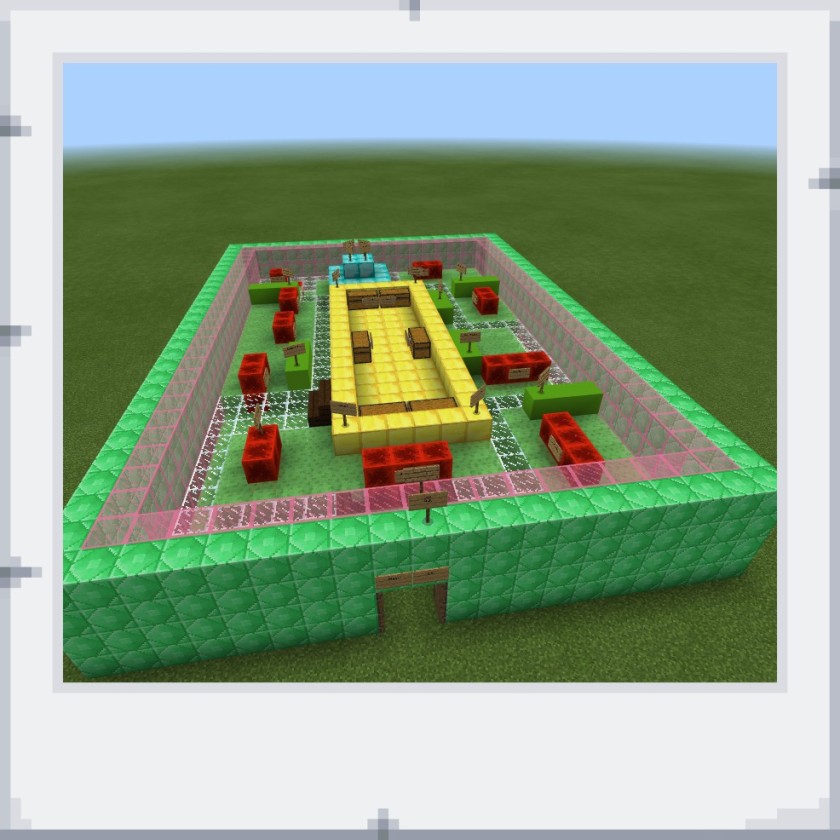I had a chance to work with Mrs. Scott’s 5th Graders are Fort Lewis last week as they worked to design plant and animal cells in Minecraft Edu. I love this activity for so many reasons, but most importantly, the conversations that ensued as students worked in small groups to design and build their cells. If you stood in the middle of the room and just listened, you could hear so many things going on that we strive for in classrooms:
- Meaningful discussion of a topic using vocabulary as they discussed which materials to use for their cell parts and why.
- Embedded use of the writing process as students worked to label and describe cell parts. It mattered to them that their spelling and grammar was correct.
- Collaboration and communication skills being used as students worked to explain their ideas and build their model together. Students who were more versed in Minecraft helped those who weren’t, and there was great discussion and compromise as they decided exactly how to build their project.
I wish I could capture all these things to show other teachers, but I haven’t found the best way to do that yet. There’s nothing like standing in the middle of it. So this post is my attempt to show what I can.
To begin, we discussed the design challenge and the expectations of students when they worked in groups in Minecraft. We talked about the different types of players in Minecraft projects. (The chart below was helpful later in class for students who began wandering off to do their own thing or destroying others work. Group members were able to quickly name behavior and redirect their errant group member.)

Then, students had 10 minutes to talk about what they were going to build and make decisions such as who would host the world, what jobs each group member would complete, and basically how they would accomplish the task. It was tempting to skip this part and just jump right in, but I think the upfront discussion lead to better group work once students were in the game.

Each group picked a person to host the world, and all the other players in the group joined that world. They sat at tables together so they could easily talk in real life while working together virtually. I have found this setup works really well for small groups.
Finally, at the very end of the time, students recorded a tour of their world using Flipgrid. I know that the tours would turn out better with screencasting software, but we didn’t have that option this time so I just grabbed iPads and had them record on one computer.
You can check out their tours here:
I love how all the groups approached this challenge differently.
If you want to try out this design challenge in your own classroom, here is the design brief: Plant and Animal Cell Design Brief
We just used the Blocks of Grass world in creative mode.
A huge “thank you” to Mrs. Scott for always being willing to collaborate and integrate technology.
*This lesson originally came from Joshua Thom and a lesson he posted in the Microsoft Community. You can view the original lesson here: 8Bit Cell Tour I adapted it a bit to align with the Children’s Engineering Design Model.
**Cross-posted on The Learning Collaboratory here: Designing Plant and Animal Cells in Minecraft Edu







































One thought on “Designing Animal and Plant Cells in Minecraft Edu”